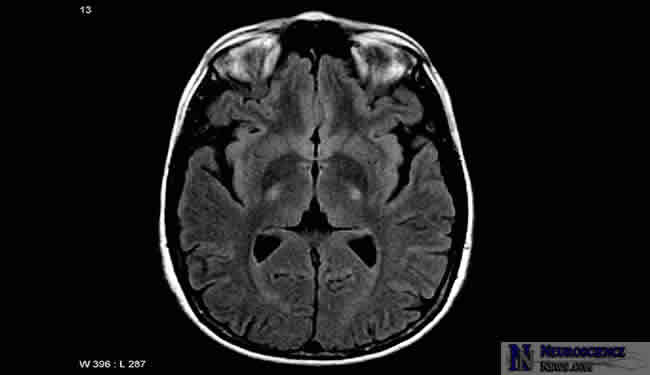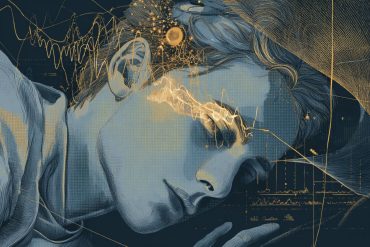Researchers discover common cause of all forms of ALS.
The underlying disease process of amyotrophic lateral sclerosis (ALS and Lou Gehrig’s disease), a fatal neurodegenerative disease that paralyzes its victims, has long eluded scientists and prevented development of effective therapies. Scientists weren’t even sure all its forms actually converged into a common disease process.
But a new Northwestern Medicine study for the first time has identified a common cause of all forms of ALS.
The basis of the disorder is a broken down protein recycling system in the neurons of the spinal cord and the brain. Optimal functioning of the neurons relies on efficient recycling of the protein building blocks in the cells. In ALS, that recycling system is broken. The cell can’t repair or maintain itself and becomes severely damaged.
The discovery by Northwestern University Feinberg School of Medicine researchers, published in the journal Nature, provides a common target for drug therapy and shows that all types of ALS are, indeed, tributaries, pouring into a common river of cellular incompetence.
“This opens up a whole new field for finding an effective treatment for ALS,” said senior author Teepu Siddique, M.D., the Les Turner ALS Foundation/Herbert C. Wenske Professor of the Davee Department of Neurology and Clinical Neurosciences at Northwestern’s Feinberg School and a neurologist at Northwestern Memorial Hospital. ”We can now test for drugs that would regulate this protein pathway or optimize it, so it functions as it should in a normal state.”
The discovery of the breakdown in protein recycling may also have a wider role in other neurodegenerative diseases, specifically the dementias. These include Alzheimer’s disease and frontotemporal dementia as well as Parkinson’s disease, all of which are characterized by aggregations of proteins, Siddique said. The removal of damaged or misfolded proteins is critical for optimal cell functioning, he noted.
This breakdown occurs in all three forms of ALS: hereditary, which is called familial; ALS that is not hereditary, called sporadic; and ALS that targets the brain, ALS/dementia.
In related research, Feinberg School researchers also discovered a new gene mutation present in familial ALS and ALS/dementia, linking these two forms of the disease.
Siddique has been searching for the causes and underlying mechanism of ALS for more than a quarter century. He said he was initially drawn to it because, “It was one of the most difficult problems in neurology and the most devastating, a disease without any treatment or known cause.”
Siddique’s efforts first showed in 1989 that molecular genetics techniques were applicable to ALS, then described the first ALS gene locus in 1991, which led to the discovery of SOD1 and engineering of the first genetic animal model for ALS.
ALS affects an estimated 350,000 people worldwide, including children and adults, with about 50 percent of people dying within three years of its onset. In the motor disease, people progressively lose muscle strength until they become paralyzed and can no longer move, speak, swallow and breathe. ALS/dementia targets the frontal and temporal lobes of the brain, affecting patients’ judgment, the ability to understand language and to perform basic tasks like planning what to wear or organizing their day.
“These people in the prime of their lives and the peak of their productivity get this devastating illness that kills them,” Siddique said. “The people who get ALS/dementia, an even more vicious disease, have a double whammy.”
Broken Down Recycling System
Feinberg School scientists found the cause of ALS by discovering a protein, ubiquilin2, whose critical job is to recycle damaged or misfolded proteins in motor and cortical neurons and shuttle them off to be reprocessed.
In people with ALS, Feinberg researchers found ubiquilin2 isn’t doing its job. As a result, the damaged proteins and ubiquilin2 loiter and accumulate in the motor neurons in the spinal cord and cortical and hippocampal neurons in the brain. The protein accumulations resemble twisted skeins of yarn — characteristic of ALS — and cause the degeneration of the neurons.
Researchers found ubiquilin2 in these skein-like accumulations in the spinal cords of ALS cases and in the brains of ALS/dementia cases.
The scientists also discovered mutations in ubiquilin2 in patients with familial ALS and familial ALS/dementia. But the skein-like accumulations were present in people’s brains and spinal cords in all forms of ALS and ALS/dementia, whether or not they had the gene mutation.
“This study provides robust evidence showing a defect in the protein degradation pathway causes neurodegenerative disease,” said Han-Xiang Deng, M.D., lead author of the paper and associate professor of neurology at the Feinberg School. “Abnormality in protein degradation has been suspected, but there was little direct evidence before this study.” The other lead author is Wenjie Chen, senior research technologist in neurology.
About 90 percent of ALS is sporadic, without any known cause, until this study. The remaining 10 percent is familial. To date, mutations in about 10 genes, several of which were discovered at Northwestern, including SOD1 and ALSIN, account for about 30 percent of classic familial ALS, noted Faisal Fecto, M.D., study co-author and a graduate student in neuroscience at Feinberg.
The study was supported by the National Institute of Neurological Disorders and Stroke, the Les Turner ALS Foundation, the Herbert and Florence C. Wenske Foundation, the Blazeman Foundation for ALS and other sources.
Notes about this ALS research article
Contact: Marla Paul – Health Sciences Editor – Northwestern University
Source: Northwestern University press release








